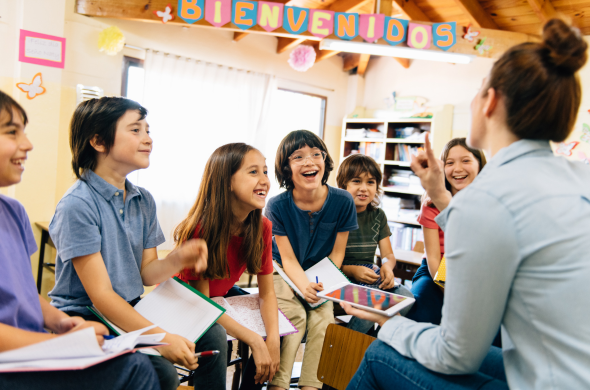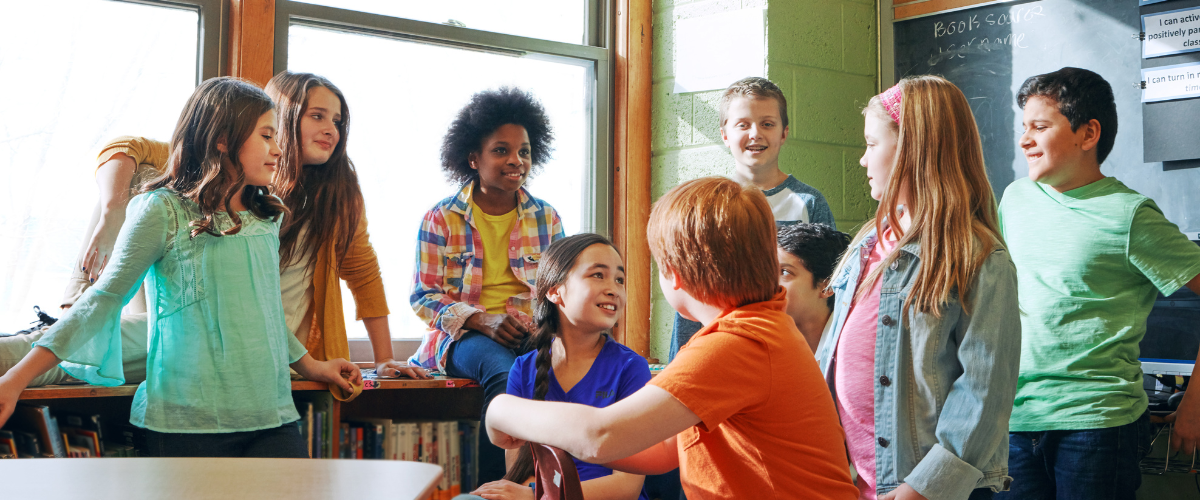Teacher Tips: A Better Way to Think About Social Studies
Some of the best teaching advice I received from my mother, a teacher of 30+ years, was a different way to look at Social Studies. Her perspective on Social Studies taught me that it is not an isolated area of study but exists in everything we teach. Every subject, discipline, and activity teaches Social Studies.
Reading groups, library and computer time, literature, science, math, geography, art, and even holidays can all help our students learn about human society.
It’s so important to teach our students a holistic picture of Social Studies because it can truly impact their lives! Social Studies teaches good character traits like honesty, perseverance, courage, respect, and fairness.
Teaching these character-building lessons helps students have more self-esteem, be more successful and productive, and see more value in our society.
When we identify Social Studies teaching moments in other disciplines, we can point them out to our students to help them build character and knowledge. We can also integrate Social Studies topics into our teaching in unconventional ways.
From my teaching experience, integrating Social Studies into all curriculum learning can make a huge difference in the classroom and your students’ futures. I’ve found that these character-building lessons help them be more successful and productive, have more self-esteem, and see more value in being a part of society.
“Intelligence is not enough. Intelligence plus character, that is the goal of true education.”
—Martin Luther King Jr.

One way to integrate Social Studies into class time is to hold regular classroom meetings. These meetings can be a great tool to teach students about sharing opinions, solving problems, and complimenting others.
My classroom meetings follow this outline:
Class Meeting Instructions:
Purpose:
Class meetings are meant to establish trust in the class and resolve concerns (like running in the hallway, throwing food during lunch, or bullying), all while teaching students about problem-solving and expressing their voices appropriately in their community.
Agenda:
1. Start with a song
Focus the children and begin the class meeting with a simple song. I use the children’s song, “I’m a VIP” by Janeen Brady, but with new words:
“I’m a VIP in this community, I’m a VIP you see. I’m a VIP in this community and that’s a very good thing to be. I have opinions. I can solve problems. I can give compliments. And that’s because I am capable. A capable VIP. THAT’S ME!!”
(note: VIP = Very Important Person)
2. Kick off the meeting
Remind students that during the class meeting, they’ll have a chance to share an opinion, solve a problem, and share a compliment.
I recommend using a talking stick and a notepad during the meeting. The talking stick will help ensure every child gets a chance to speak, and you can validate their comments by writing them on the notepad.
These are the rules I kick off our class meetings with:
Rule 1: The talking stick will be passed around the circle to each student after the teacher has posed a question.
Rule 2: No one will talk unless they are holding the talking stick.
Rule 3: A student may pass without adding a comment to the discussion
Rule 4: The teacher will write down all responses
Rule 5: All students will offer respectful responses and use good character behavior.
3. Share opinions
Pose an opinion question to your students. It can be something as simple as their favorite color, holiday, or food. As the year progresses, you can ask more thought-provoking questions about your students’ learning!
Remember to always keep it positive!
Write responses or keep a tally on the notepad, then read the responses back to the students when everyone has had a turn.
4. Solve problems together
To move to the next part of the meeting, state a problem or disruption you have noticed in the classroom. Pass the talking stick around the circle again and give each child a chance to offer a solution to the problem.
Once every student has shared, restate the problem, read the ideas the students have offered, and ask for votes on each one. Discuss the top two solutions further and guide the discussion by asking more questions.
When the students reach a consensus, get their commitment!
Ask them to raise their hands if they will follow the proposed solution. If any students don’t raise their hands, address each of them personally and say, “Please help us understand why you will not follow the proposed solution.”
Once all their concerns have been voiced and addressed, ask again for commitments to the previous or revised solution.
5. Give compliments
Next, ask the students who they have noticed making good choices, being kind, or showing good hero characteristics. Don’t record this part on the notepad, but do kick off the discussion by complimenting a student in the class!
Remind students to say “thank you” if they receive a compliment and that it’s alright to pass if they don’t want to share.
You can hold these class meetings regularly or whenever you feel there is a need for one!
Finding Social Studies teaching moments and integrating them into your class schedule with activities like class meetings is vitally important.
As teachers, we can do so much to help our students develop important character values with Social Studies education.
Warmly,
Debbie
